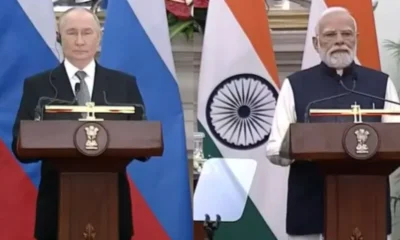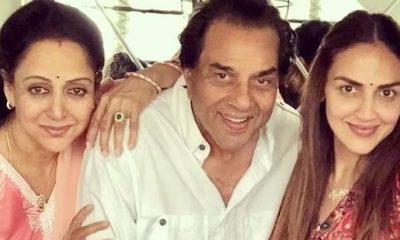Entertainment
Happy Birthday Lucky Ali: From being divorced thrice to leaving Bollywood due to disrespect, Here are five unheard facts about O Sanam singer
Did you know that Ali had an unusual career in the music industry. Yes! unlike most other singers, Lucky Ali had a rather peripheral relationship with Hindi film music.

Entertainment
Dhurandhar review: Ranveer Singh roars back, Akshaye Khanna shines in intense spy thriller
Ranveer Singh returns with a ferocious performance in Dhurandhar, supported by Akshaye Khanna, Sanjay Dutt, and a gripping espionage storyline set against real historical events.
Entertainment
120 Bahadur box office day 1: Farhan Akhtar’s film starts slow with Rs 2.35 crore opening
Farhan Akhtar’s new release 120 Bahadur opened to Rs2.35 crore, while De De Pyaar De 2 continued its strong hold on day eight.
Entertainment
Family Man 3 ending triggers online backlash despite strong reviews
The Family Man 3 has impressed viewers with its performances and storytelling, but its abrupt ending has sparked online criticism, leaving fans demanding closure.
-

 Entertainment8 hours ago
Entertainment8 hours agoDhurandhar review: Ranveer Singh roars back, Akshaye Khanna shines in intense spy thriller
-

 India News13 hours ago
India News13 hours agoIndiGo flight chaos deepens as over 500 services cancelled, passengers stranded for hours
-

 India News8 hours ago
India News8 hours agoIndia and Russia vow to walk together against terrorism, reaffirm strategic partnership
-

 India News13 hours ago
India News13 hours agoRBI cuts repo rate to 5.25%, paving the way for cheaper loans
-

 Latest world news13 hours ago
Latest world news13 hours agoAsim Munir appointed Pakistan’s first Chief of Defence Forces, to serve 5-year term
-

 India News2 hours ago
India News2 hours agoSimone Tata passes away at 95: A look at the visionary who shaped Lakme and modern retail
-

 India News2 hours ago
India News2 hours agoLok Sabha clears bill to levy cess on pan masala and similar goods for health, security funding
-

 India News3 hours ago
India News3 hours agoCentre orders probe into IndiGo crisis, expects normal flight operations in three days















